

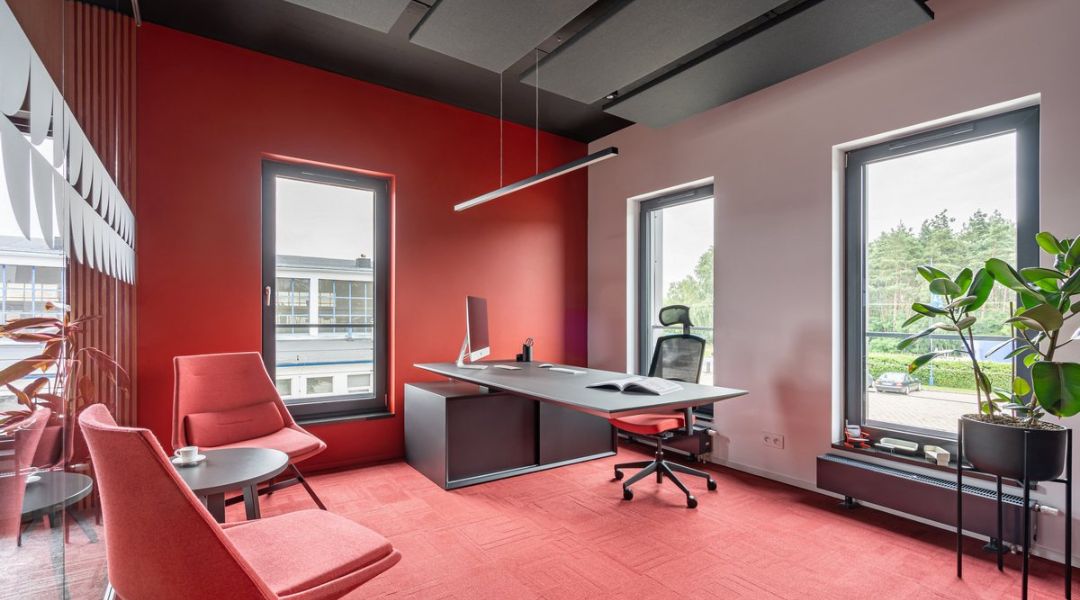
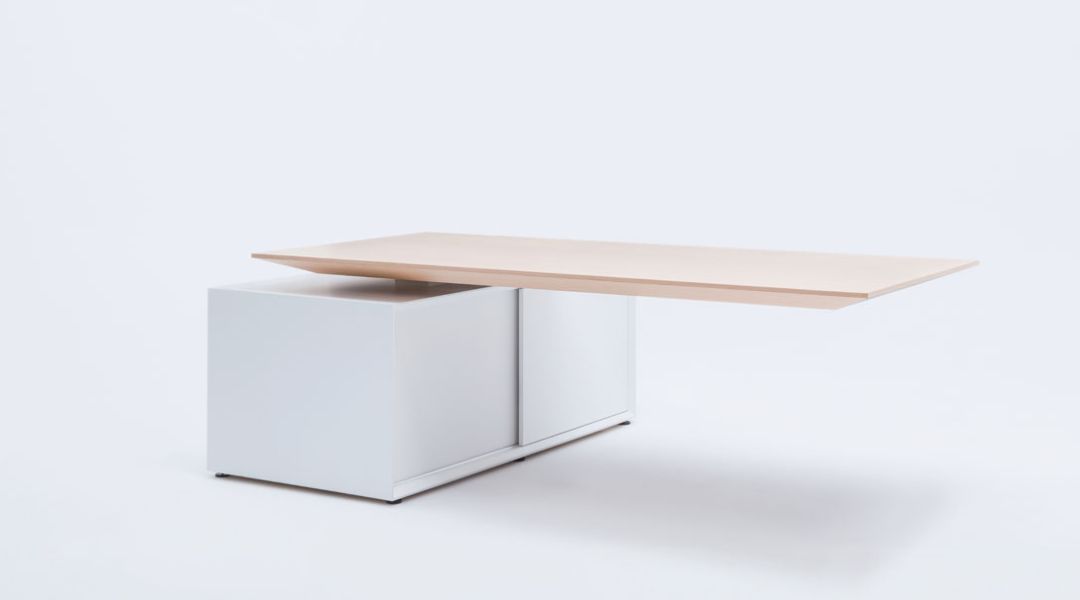
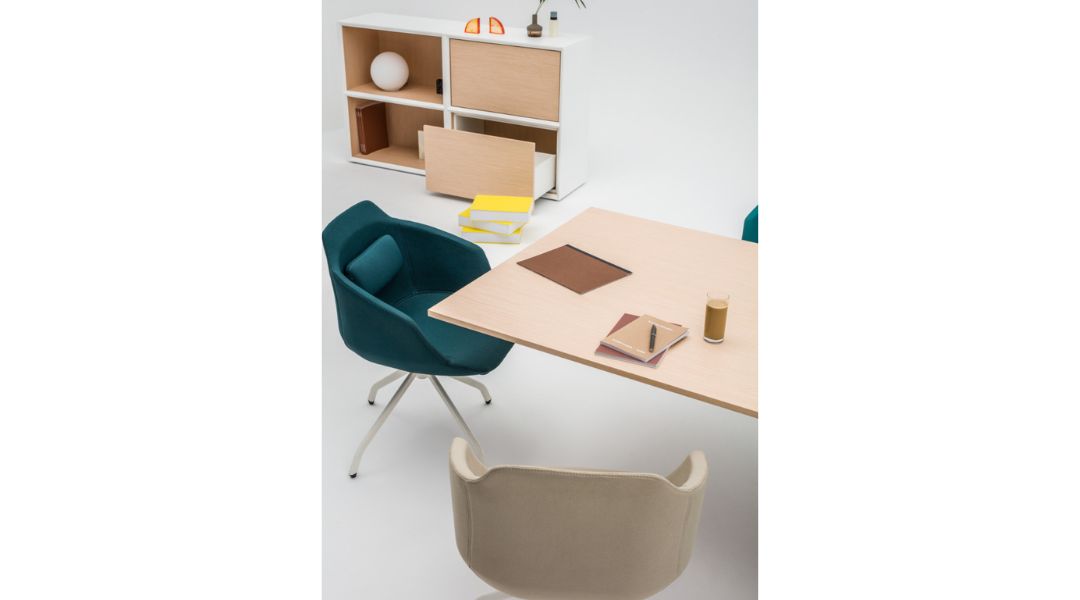
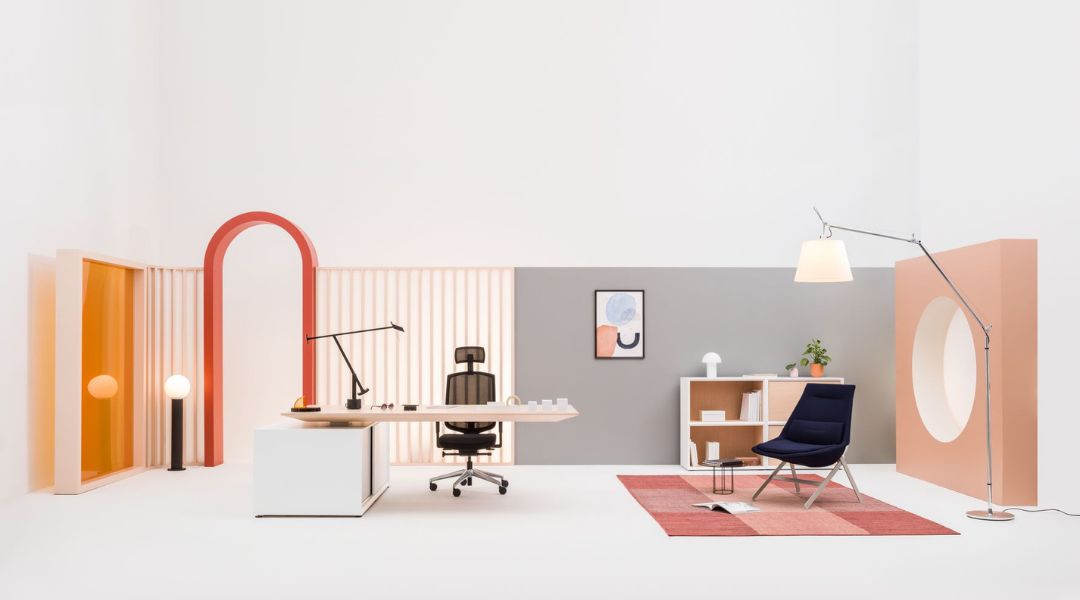
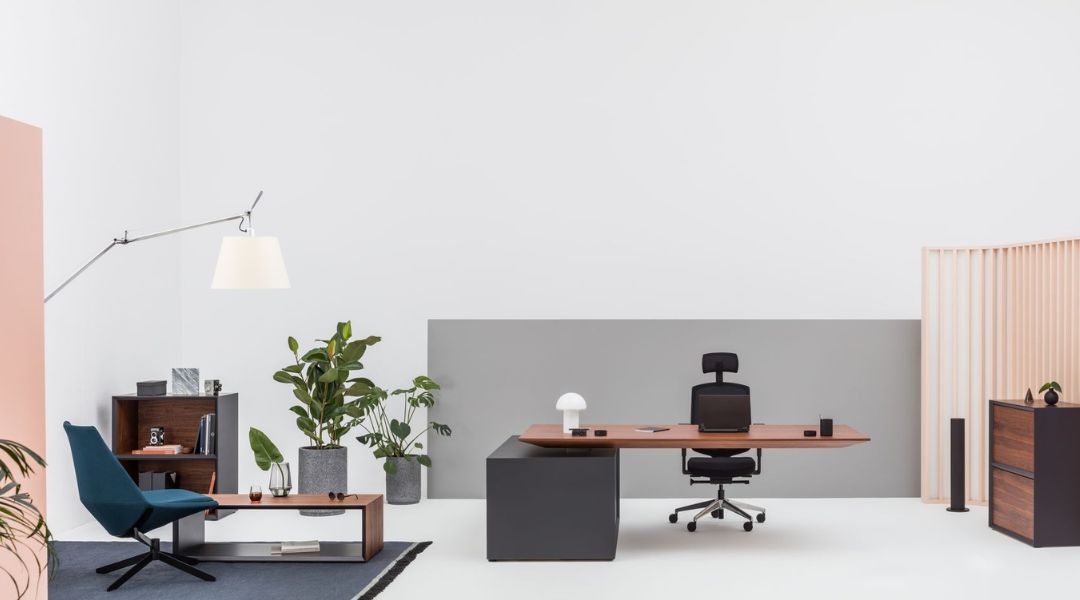
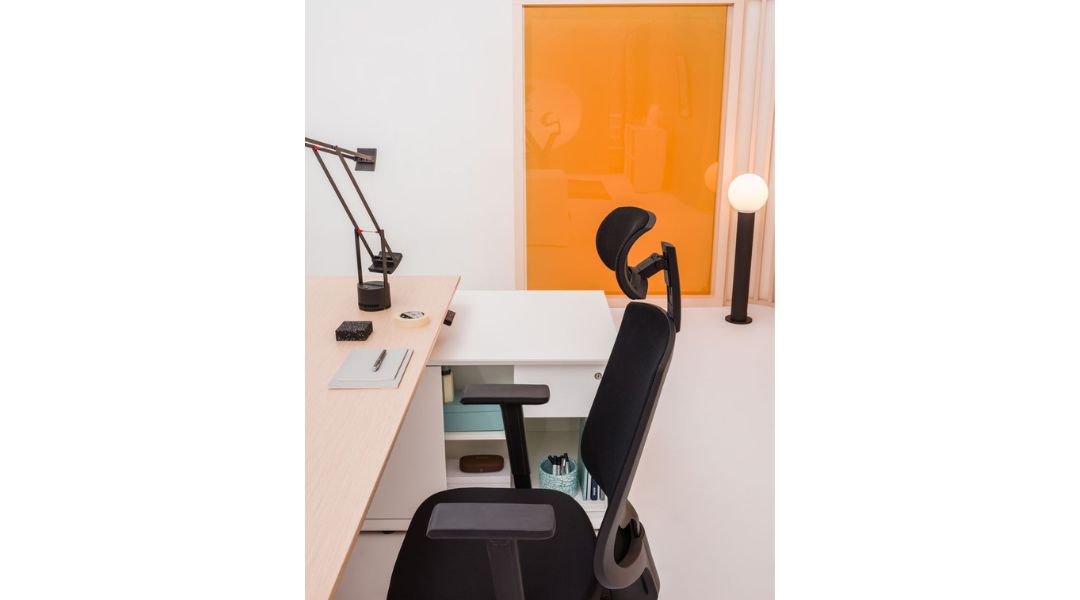
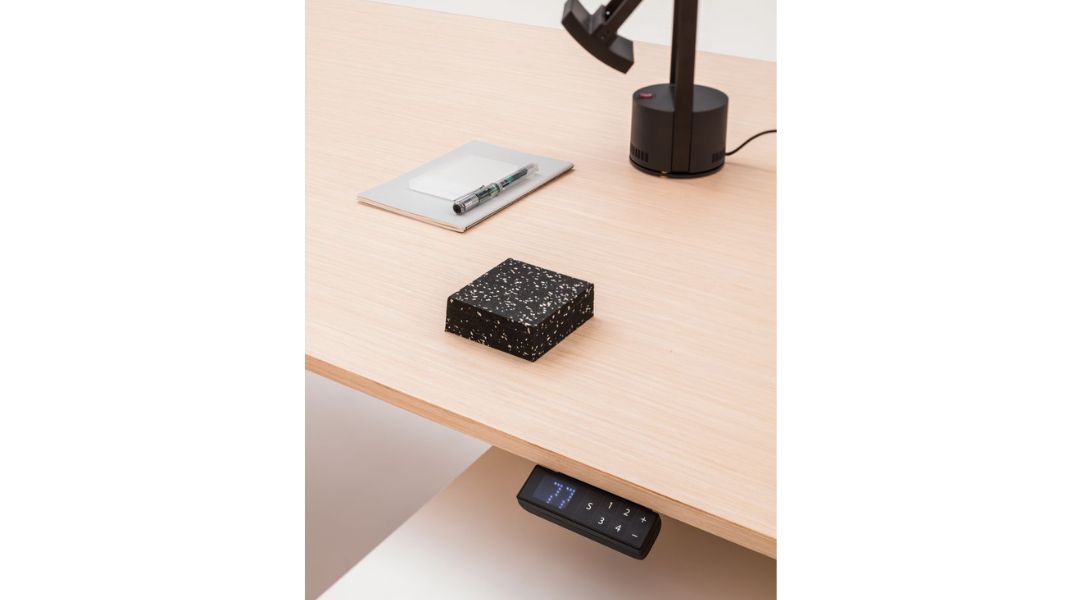
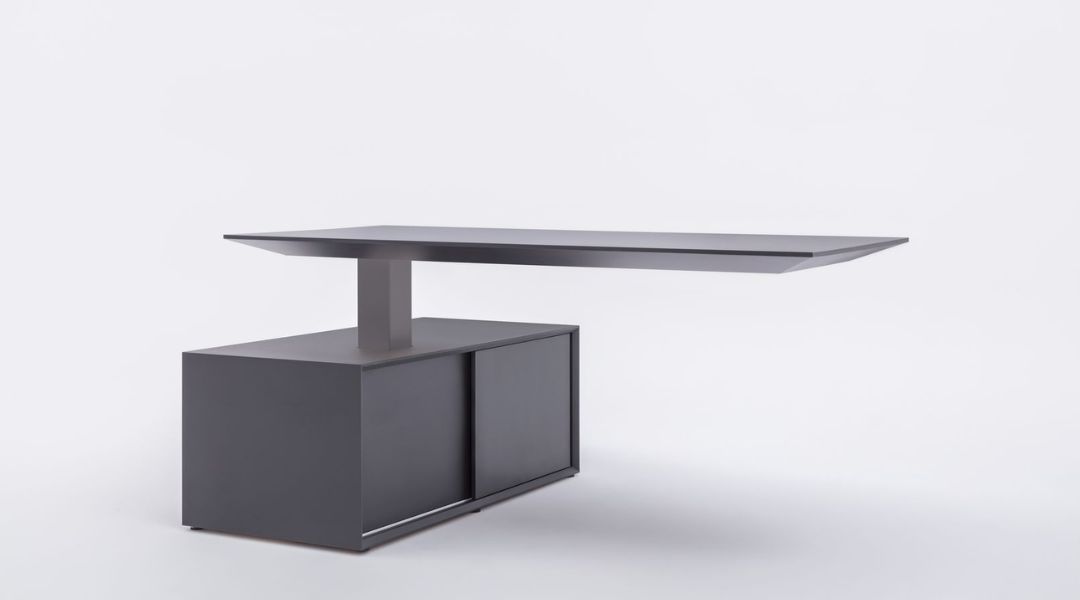
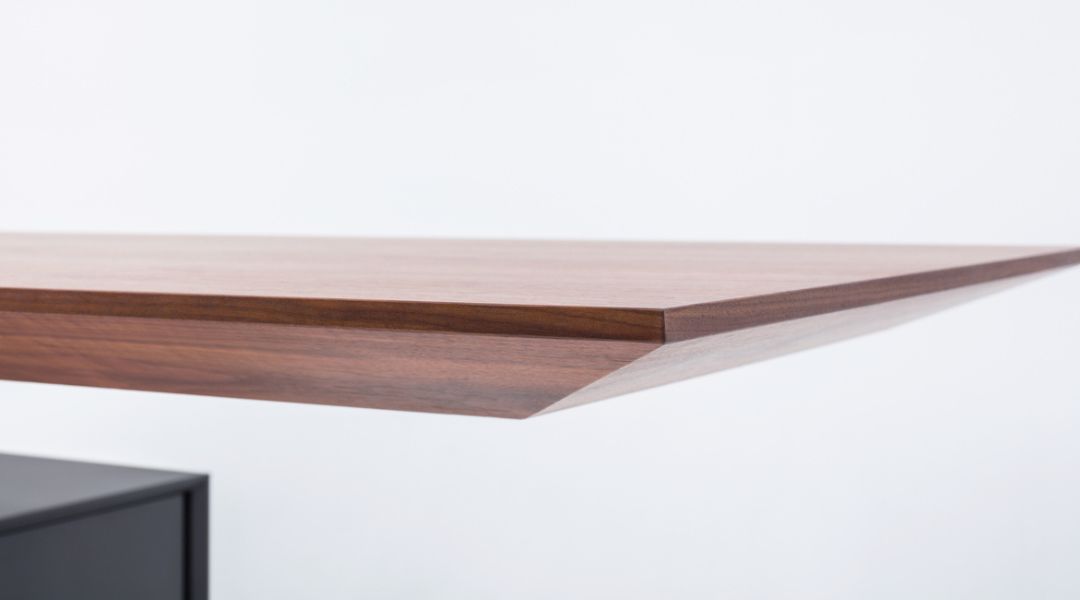
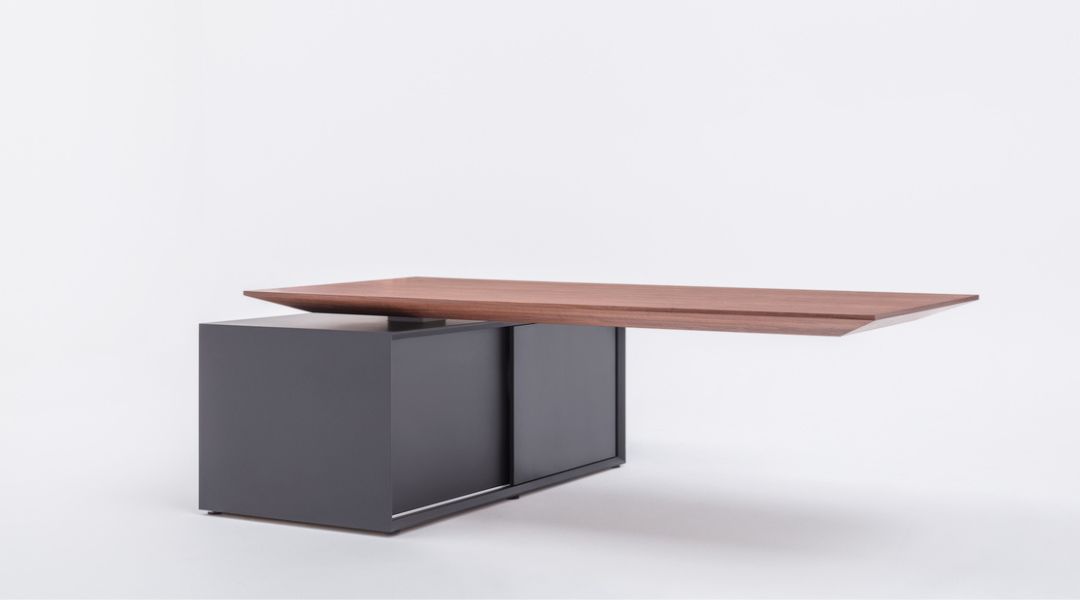
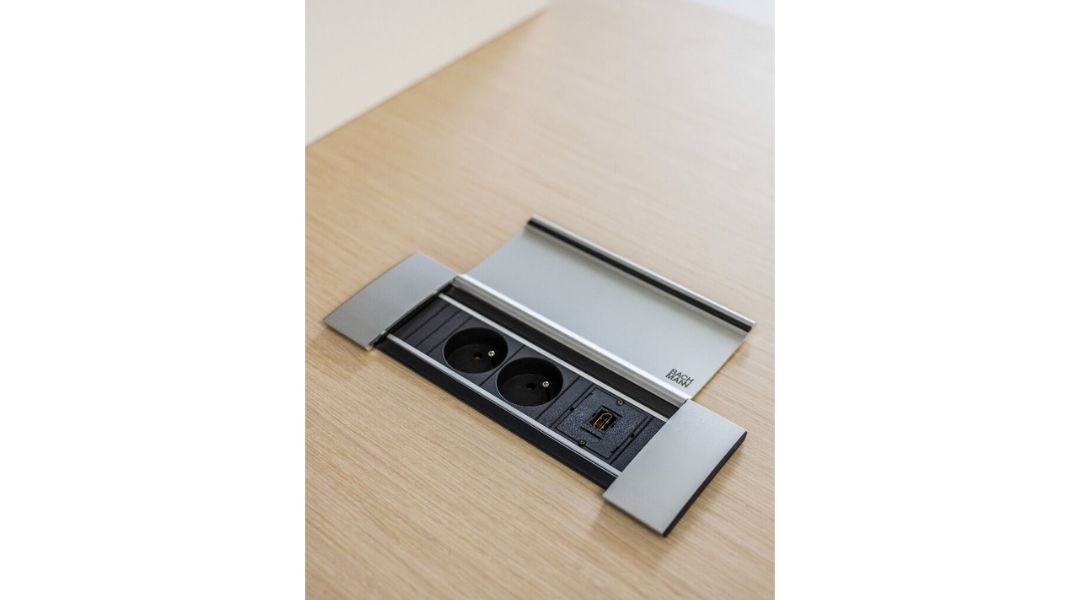
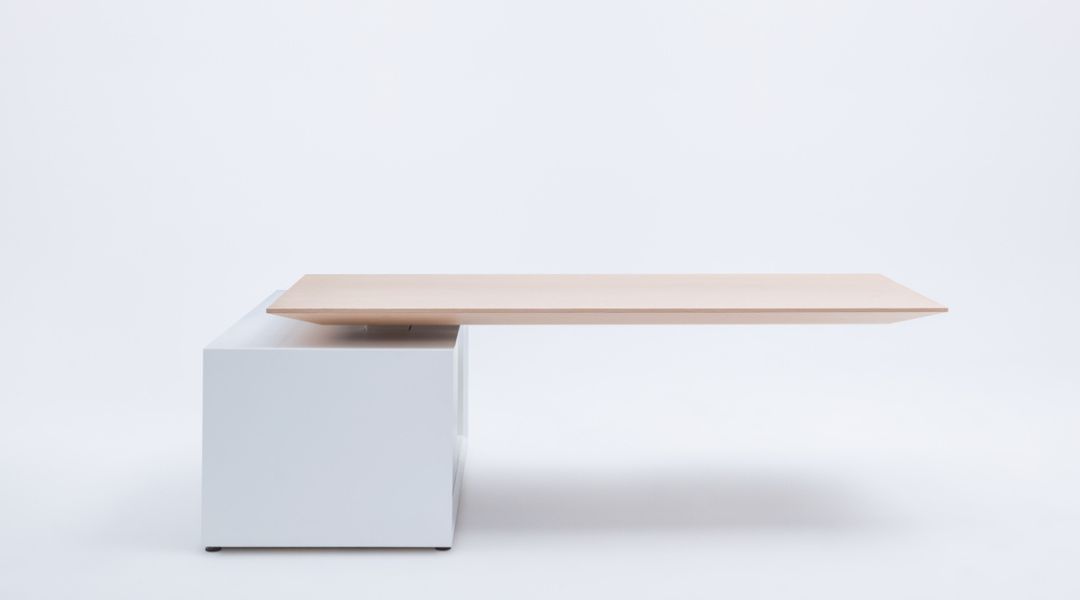
Gravity Desk — MDD (designer: Dymitr Malcew)
Design & Concept
Gravity reimagines the executive desk as both a sculptural object and a modern ergonomic workstation. Its signature visual drama comes from a large top that appears to float, anchored on a single fulcrum with nearly “invisible” support structure. The design is minimal, inspired by modern architecture, yet packed with technology that allows a seamless transition between sitting and standing work modes. It’s aimed at modern leaders who expect both presence and performance.
Materials & Finish Options
Worktop: thick (≈ 78 mm) top surface in real veneer (e.g. American walnut, elm) or high-performance laminate (HPL).
Body / non-top panels: MDF / lacquered MDF (≈ 28 mm) for structure.
Frame & Base: Steel, powder-coated finish; with a large central column (≈ 150×150 mm) with supporting steel profiles (≈ 60×30 mm) for drive & stability.
Key Features & Functionality
Electric Height Adjustment: The desktop can slide up/down (sitting ⇄ standing) — smooth, reliable, ergonomic operation.
Max Load: The top supports up to ~ 70 kg safely.
Storage & Drawer: Contains a drawer with full extension and soft/ self-closing slide, plus a sliding front panel (≈ 18 mm MDF) for aesthetics and function.
Mediabox / Connectivity: Optional built-in power / data modules (e.g. 2×230 V, USB, sometimes HDMI) for charging or connectivity.
Safety & Stability Considerations: Because the top is heavy and forceful when moving, the structure uses concrete ballast in some variants. Also, desk requires a hard, non-flexible floor with minimal point load capacity (~ 300 kg per point) to maintain stability.
Dimensions & Variants
Height range: ≈ 750 mm up to 1160 mm when raised.
Sizes: Common widths ~ 2400 mm, depths ~ 1600 mm.
Thickness: Top ~ 78 mm, body panels ~ 28 mm. Drawer front ~ 18 mm.
Aesthetic Qualities & Visual Identity
Strong architectural lines, with one single major supporting column, create a sense of levitation and openness. The desk plays with tension — heavy materials vs minimal support, solidity vs light appearance.
Beveled / slanted edges along the top (a detail repeated in the rest of the Gravity family, including tables and stand units) contribute to a distinct profile.
Finishes lean toward premium natural woods and muted tones: walnut, elm, graphite, matt lacquered surfaces etc., which add richness without ostentation.
Use Cases & Positioning
Gravity is meant for leadership / executive offices, luxury workspaces, or high-profile settings where design presence matters as much as utility. It works especially in spaces where visibility, prestige, and ergonomics are equally valued: boardrooms, CEO suites, design studios, or high-end home offices.
Because of its size, weight, and the nature of its support / legs, it requires careful spatial planning: sufficient floor strength, clearance for movement (sit-stand), and matching storage or accessory modules.
Strengths & Considerations
Strengths:
Eye-catching, sculptural design — the float/levitate effect gives strong visual impact.
Full sit-stand capability enhances ergonomics and adaptability.
Premium material finishes + optional features like mediabox and high-quality drawer hardware.
Considerations:
Cost will be high (materials, motors, finishes).
Requires stable flooring and careful specification to accommodate power / electrical features.
Weight and complexity of moving parts require good maintenance, reliable electrics, possibly more service.
